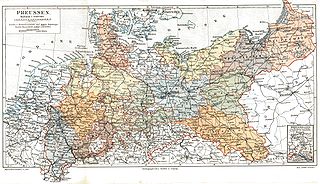Districts of Prussia

Prussian districts (
Gemeinden). Then part of a modern and highly effective public administration structure, they served as a model for the present-day districts of Germany
In the aftermath of World War I, the Prussian districts of Eupen and Malmedy (Belgium) were annexed by Belgium in 1925, thereby causing the presence of a German-speaking minority.
Administration
After the
East Prussia, West Prussia and the Grand Duchy of Posen—beyond the borders of the German Confederation. The provinces were internally divided into up to six Regierungsbezirke and further into the districts on local level, headed by a Landrat administrator. The districts usually took the name of their capital (Kreisstadt), seat of the administrative office (Landratsamt). A typical district had a rough diameter of 20 to 40 miles (32 to 64 km), in order to ensure that even the remotest villages could be reached by carriage
within a day, though few were circular in shape. In some areas, larger districts were split into two smaller districts or were resized with neighboring ones.
Larger cities usually retained their self-administration according to traditional
urban districts (Stadtkreise) comparable to independent cities. Often these cities also served as the administrative seat responsible for the smaller towns and villages incorporated into the surrounding rural districts, which then were called (Landkreise) for the purpose of differentiation (e.g. Stadtkreis and Landkreis Königsberg). The number of urban districts increased in the course of the Industrial Revolution and the following urbanization
from the 1830s onwards.
